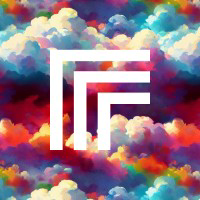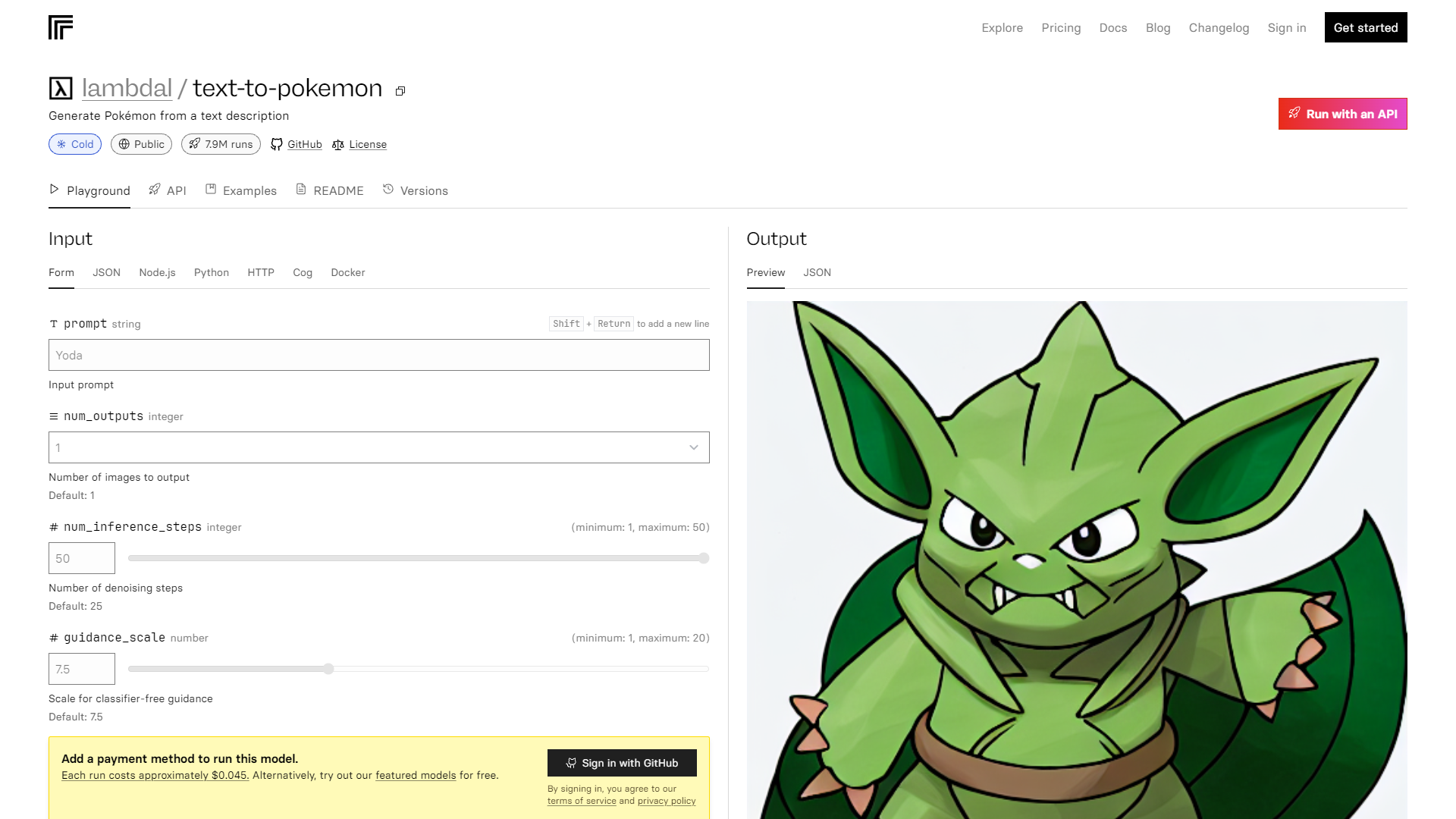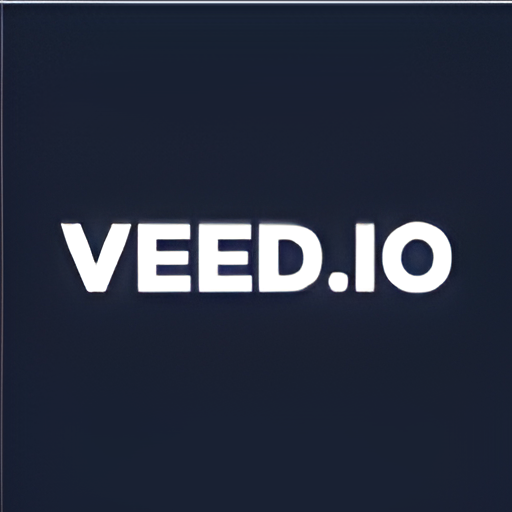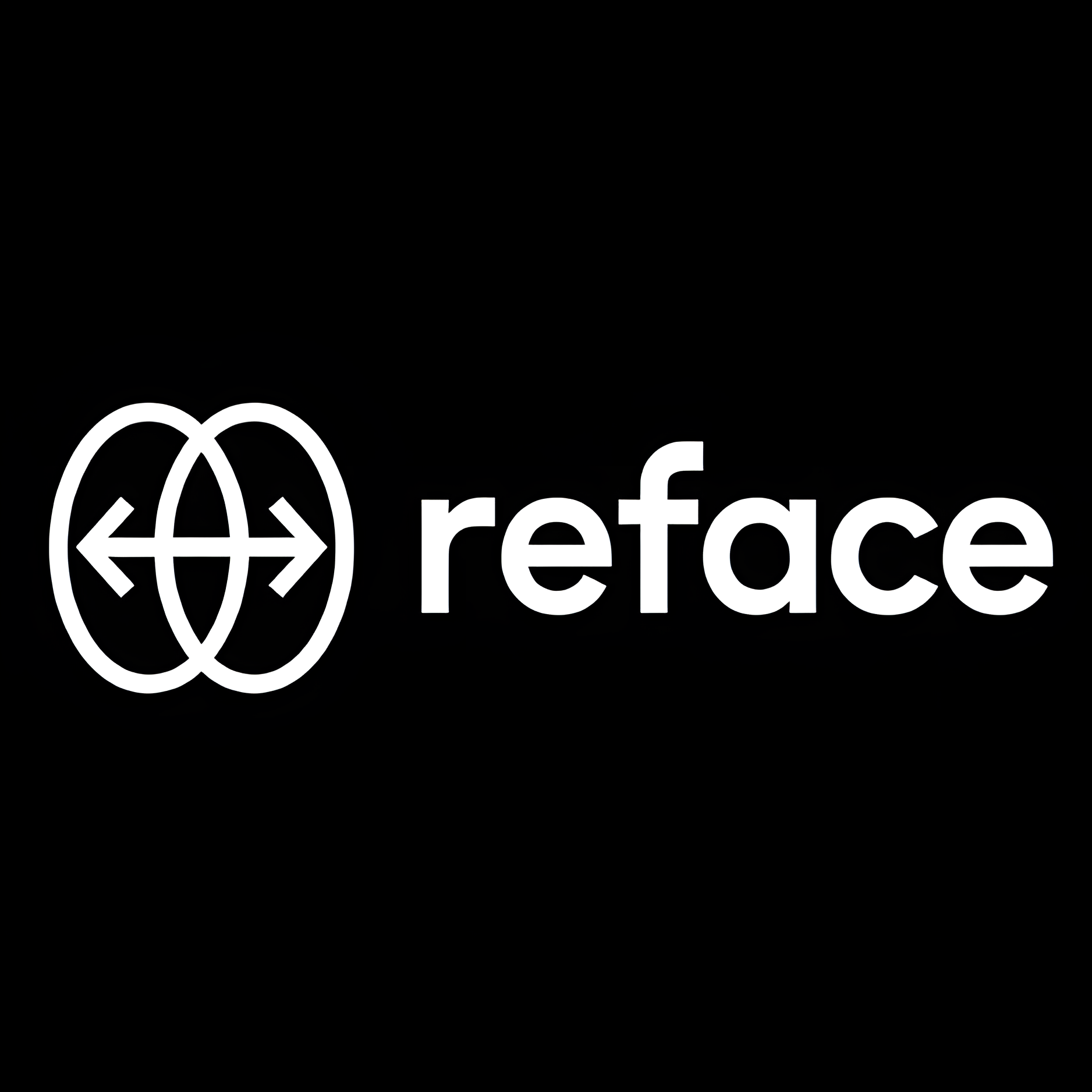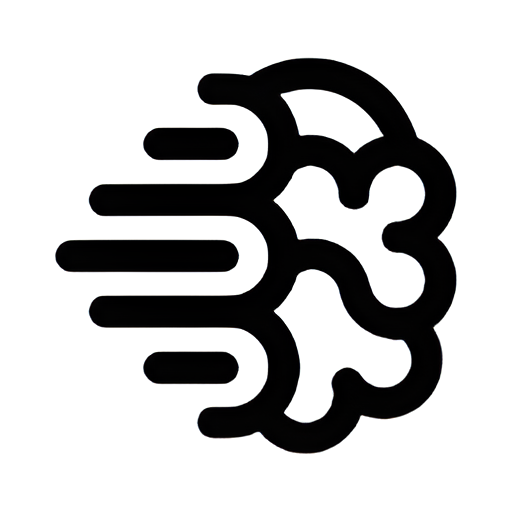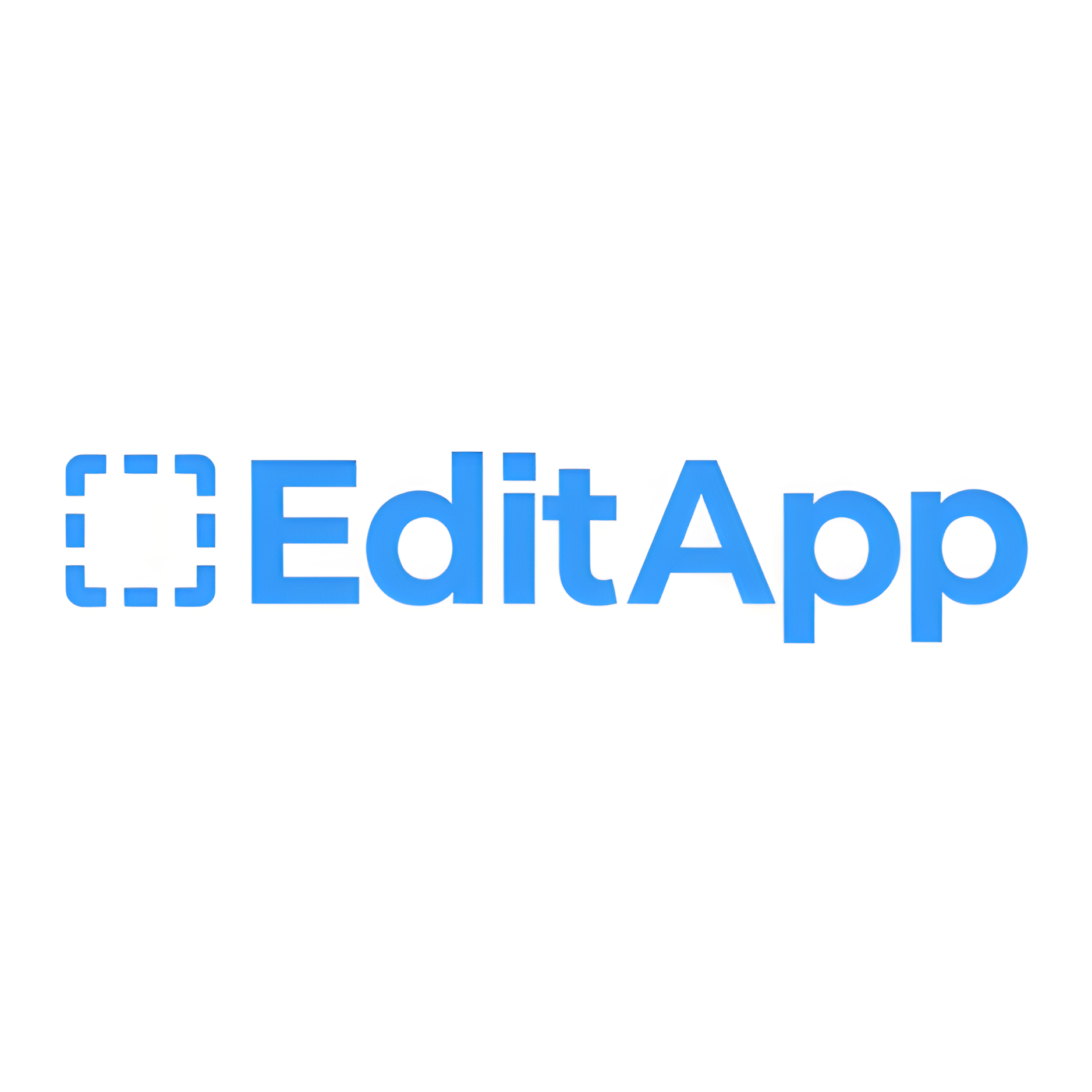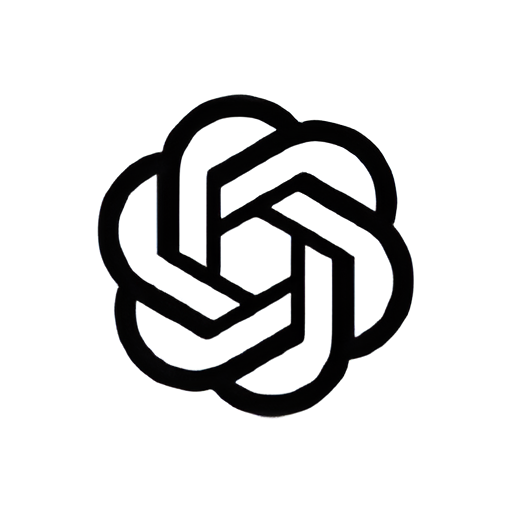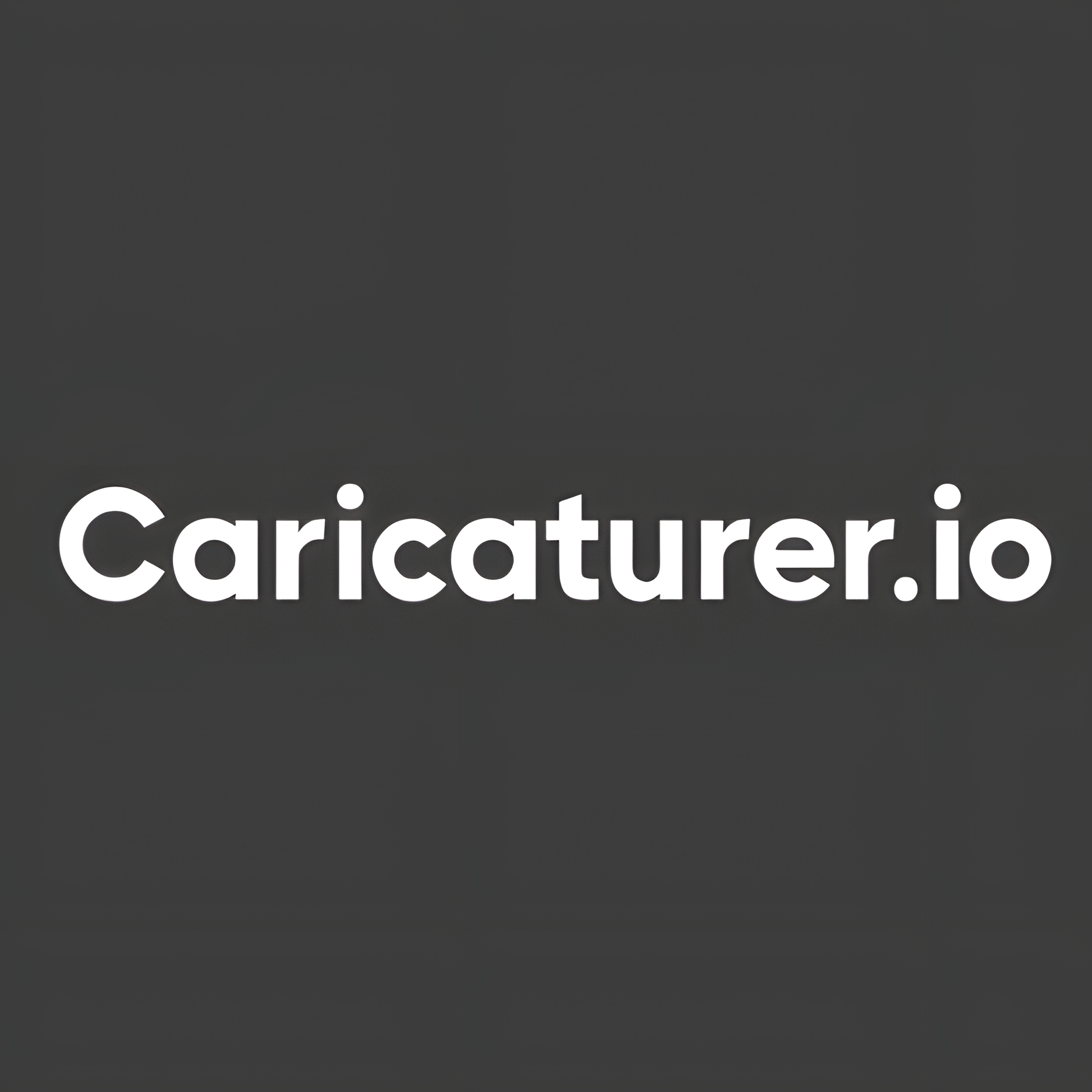Overview
Text-to-Pokémon by Lambda Labs is an innovative tool designed to transform textual descriptions into unique Pokémon characters. Developed by Justin Pinkney at Lambda Labs, this tool leverages the power of artificial intelligence to breathe life into your imagination, allowing you to visualize Pokémon as described by your words. Users can easily interact with the tool by entering prompts into the system, which then processes these inputs to generate corresponding Pokémon images.
The tool offers customizable settings, including the number of images produced, denoising steps, and guidance scale, providing flexibility and control over the image generation process. Each execution of the model incurs a minimal cost of approximately $0.043, making it both accessible and affordable. For convenience, Text-to-Pokémon can be used directly on Replicate or locally via Docker, ensuring it is widely accessible regardless of the user's setup.
Text-to-Pokémon was meticulously trained on a dataset of BLIP captioned Pokémon images using advanced GPUs from Lambda GPU Cloud. This training has equipped the model with the ability to produce high-quality and diverse Pokémon images that closely align with the provided text descriptions.
The project is open source, with extensive documentation available in the README file. This documentation includes insights into the model's creation, links to related resources such as Lambda Diffusers, the captioned Pokémon dataset, and model weights, enriching the user's experience and understanding of the tool. Whether you are a Pokémon enthusiast or an AI aficionado, Text-to-Pokémon offers a unique and creative way to engage with digital content creation.
Key features
- Text-driven generation: Users can create unique Pokémon characters by inputting descriptive text, which the AI then visualizes.
- Customizable outputs: Adjust settings like image quantity, denoising steps, and guidance scale to tailor the generation process.
- Accessible pricing model: Each model run costs approximately $0.043, making it affordable for frequent usage.
- Flexible deployment options: Operate the tool via Replicate's platform or locally using Docker, providing versatility for different user needs.
- Open source availability: The tool's source code is openly available, including detailed documentation and links to resources like datasets and model weights.
- Advanced training setup: Trained on BLIP captioned Pokémon images using high-performance GPUs from Lambda GPU Cloud, ensuring quality and innovation.
 Pros
Pros
- Real-time feedback: Users receive immediate visual feedback as adjustments are made, enhancing the interactive experience and design precision.
- Community collaboration: The platform supports user interaction, allowing creators to share tips, designs, and get feedback from a community of enthusiasts.
- High-resolution images: Generates high-quality images that can be used for professional-grade projects or digital art, ensuring clarity and detail in every creation.
- Regular updates: The tool receives frequent updates that introduce new features, improve user experience, and expand the capabilities of the AI model.
- Multi-language support: Accommodates a broad range of users by supporting multiple languages, making the tool accessible to a global audience.
 Cons
Cons
- Complex setup requirements: Users need technical knowledge to deploy the tool locally using Docker, which might be challenging for non-technical individuals.
- Limited style variety: The AI generates images based on a specific dataset, which may restrict the diversity in visual styles of the Pokémon characters.
- Dependence on text input: The quality and accuracy of the generated Pokémon heavily rely on the user's ability to provide detailed and clear descriptions.
- Resource-intensive processing: High-performance GPUs are required for optimal operation, which might not be feasible for all users on local machines.
- Update dependency: Being open source, the tool requires regular updates by the community to maintain functionality and incorporate new features.

